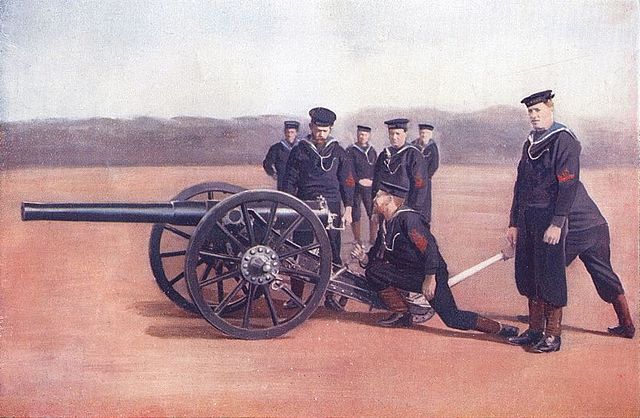The Ordnance QF 12-pounder 8 cwt was a Royal Navy "landing gun" intended for navy use ashore. "8 cwt" refers to the weight of the gun and breech, approximately 8 cwt = 8 x 112 lb (51 kg) = 896 lb (406 kg). This was how the British often differentiated between guns of the same calibre or weight of shell. This gun had a short barrel and was of relatively low power compared to the 12 pounders of 12 and 18 long cwt, although it fired the same shells.
Royal Navy gun and crew, late 1890s
In action at Fort Dachang, Cameroons, 1915
Australian and British gunners with gun in front lines at Gallipoli
A gun with HMS Victory in the background, at Portsmouth, UK
The Royal Navy's command field gun competition was a contest between teams from three Royal Navy commands, in which teams of sailors compete to transport a field gun and its equipment over and through a series of obstacles in the shortest time. The competition evolved during the early years of the 20th century. The "Command" format, negotiating walls and a chasm, was held annually at the Royal Tournament in London solely as a public display and as recruitment purposes from 1907 until 1999, apart from the periods during the World Wars. The "Inter-Port" or "Command" Competition was contested by teams from the Royal Navy annually, and was a popular item at the Royal Tournament until finishing in 1999.
Field gun competition at Earl's Court in 1975
Statue at Portsmouth commemorating the field gun competition
Naval crew with the 12-pounder 8 cwt, the type used in the competition, in the 1890s






